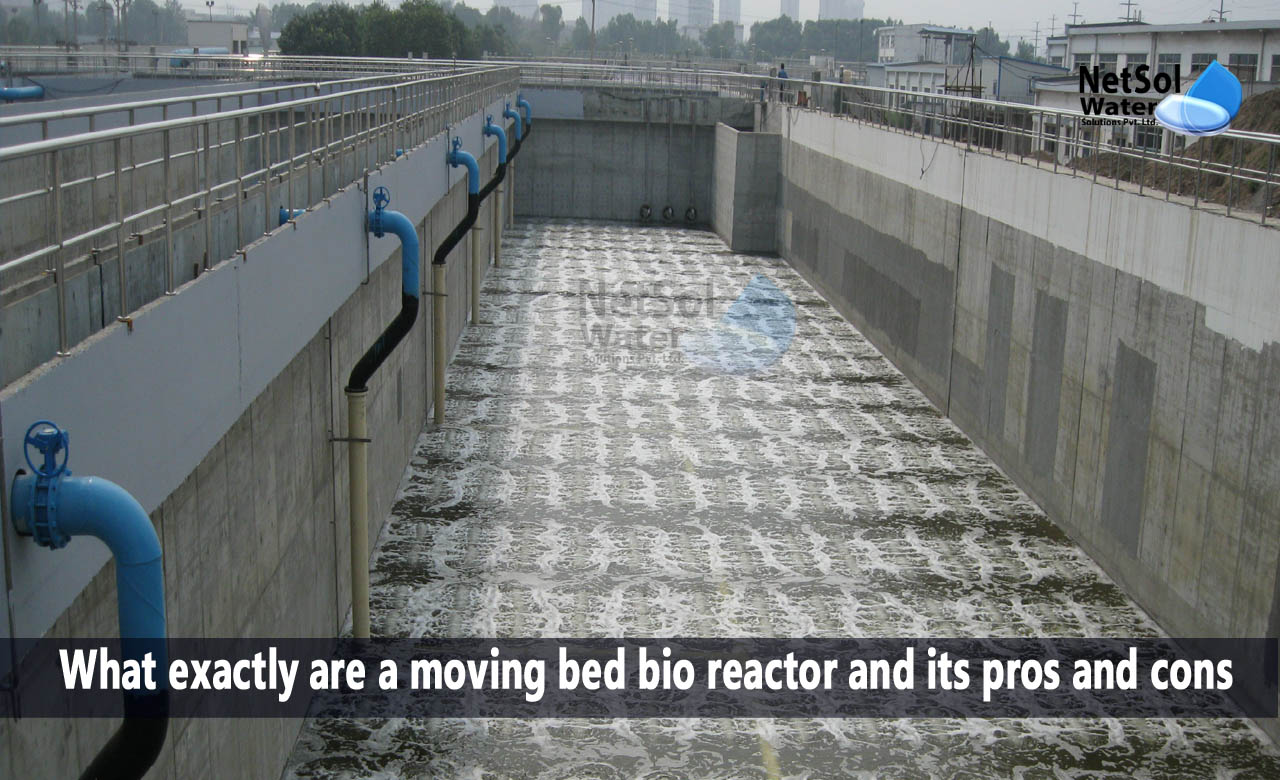Moving Bed Bio Reactor: Pros and Cons Explained
A rolling bed bioreactor is a biological sewage treatment technology. Many times, wastewater contains organic stuff that is difficult to extract physically or chemically. Hence, using a biological process is one of the best ways to deal with organic debris. The basic idea behind biological water treatment systems is to use microorganisms to break down sewage.
What exactly are a moving bed bioreactor?
A moving bed bioreactor is a biological process that combines the advantages of each of these technologies while minimizing their disadvantages.
Advantages
Decrease the time required for hydraulic retention (HRT)
The hydraulic retention time is the amount of time required by the bioreactor to process the wastewater influent effectively. Because of the combination of moving carriers and highly concentrated biofilm, HRT for these moving bed bioreactor systems is shorter than for others, often requiring only a few hours at most dependent on organic load.
Sludge generation has been reduced
One of the most important challenges when dealing with wastewater is the ensuing sludge from certain activities. Biological systems are no different. Yet, because MBBR is a fixed film system, no effluent is introduced, resulting in a lower sludge volume than in additive biological processes.
Requires less space
Because of the large inner surface area of the plastic carriers and the high bacterial concentration of the biofilm, moving bed bioreactor units are more compact and take up less room than alternative biological treatment systems.
Responds to variations in load without operator intervention.
Several alternative therapy approaches, biological or otherwise, need thorough monitoring for load variations in order to accurately adjust doses. When dealing with small swings, MBBR eliminates the need for this. The biofilm may self-adjust to tolerate different volumes, concentrations, or contaminants.
Effective increased sludge retention time (SRT)
Sludge retention time is the amount of time that a certain unit of biological medium is actively functioning within the bioreactor. Being a fixed film system, the SRT of MBBR is significantly longer than that of a suspended growth system in which the bio medium may be evacuated from the reactor at the outlet. A sludge recirculation line is required in such systems. A mesh screen at the outflow holds the plastic carriers in the moving bed bioreactor process, ensuring that no biofilm is lost.
Resistance to toxic shock
MBBR systems are resistant to toxic shock, which is an issue with alternative biological therapies, as well as being responsive to load adjustments. Although some wastewater pollutants can kill bacteria on biological medium, MBBR biofilms can adapt to and recover from such toxins.
Process performance without the use of a clarifier
In activated sludge systems, recirculated sludge is utilized to improve SRT. Nevertheless, if the clarifier’s separation fails, the return sludge may be of poor quality, impairing the reactor’s performance. This is not an issue in MBBR systems since recirculation is not necessary because the system is fixed film.
Improved settling characteristics
The effectiveness with which the reactor effluent settles in the clarifying tank can alter the quality of the treated water. This can be a problem in conventional biological treatment systems, but MBBR systems, with their combined fixed film and suspended medium properties, ensure that the solids settle off well, with no turbidity and low water content in the sludge.
Disadvantages
Manual bacterial monitoring is required.
Biological systems need more frequent monitoring than conventional therapies. You cannot just add a sensor in the tank to continuously monitor the bacteria in the bio medium. To ensure that the bacteria remain alive and healthy, operators must collect samples of the medium on a regular basis and physically evaluate them in a lab.
Requires a skilled operator
To monitor the bio media, the operators must be professionals in biological water treatment. Although the physical functioning of these systems is not overly complicated, the biological processes that occur are complex and require the involvement of professional staff to ensure optimal performance.
Conclusion
MBBR treatment systems combine some of the best features of the activated sludge process and trickling filters while avoiding some of their disadvantages, but they also have some of their own. Nonetheless, in some circumstances and applications, the advantages may exceed the disadvantages.
Netsol Water is a well-known company that provides exceptional wastewater, garbage, and water treatment solutions. All physical, chemical, and biological procedures, as well as MBBR, MBR, Activated Carbon, and Effluent Treatment, are available from us.
Please contact us at +91-9650608473 or enquiry@netsolwater.com for further information or to make a purchase.

